A good public park is a coveted asset in nearly every neighborhood: attractive foliage, plenty of benches, state-of-the-art playgrounds and gathering spaces are points of pride for communities. But there is a divide among parks in the Bronx, with stark differences even in spaces that are mere steps from each other. While some are important communities that invite activism and improvement, others are underserved, unused and overgrown. Miscommunication and lack of urgency among public officials perpetuate the divide, while private funds and volunteerism help some parks and not others. And when parks fail to meet city standards, it is often community members who must champion their public parks and advocate for their improvement. In the Bronx, where green grass, sports fields and lights aren’t guaranteed, public parks rest at the intersection between friend and foe.
Story by Samantha Stokes
__________________________________________________________________________________
Where the grass is greener
In Tremont, two parks mere steps from each other co-exist seemingly in different worlds.
Crotona Park has trimmed grass, picnic areas and a variety of courts. It is tidy and clean. Community members frequent the park with children and friends, and it’s viewed in the neighborhood as a safe and clean gathering space.
Across the Cross Bronx Expressway, Tremont Park couldn’t be more different. It is dirty and unkempt with patchy, unruly grass. Garbage bins overflow. A few patrons sit alone on old, weathered benches.
Tremont and Crotona represent a divide among public parks in the Bronx. Dubbed “The City’s Greenest Borough,” the Bronx has more acreage dedicated to public parks than any other borough in the city. And yet, inconsistencies persist from park to park. Trash overflows in some and is managed in others. Some community members fear their local parks could be hotbeds for crime, while others enjoy playgrounds with their children.
Read: Acceptable or unacceptable: trash and inequality in two Bronx parks
These inconsistencies prevail in part because the Parks Department evaluates parks on a binary system — labeling them as “acceptable” or “unacceptable” — rather than identifying specific problems.
The city has inspected its more than 1,700 public parks since 1994, and since 2016, between 84 and 94 percent of parks in the Bronx were considered acceptable. The inspection program is a “comprehensive, outcome-based performance measurement system,” according to the Parks Department. Inspections are random and assess specific park features, such as cleanliness, physical structures and landscaping. In the end, a park either passes or fails inspection.
New Yorkers for Parks, an independent research group in the city, assesses parks citywide for an annual report card. Instead of a binary system, the group rates parks and boroughs on a letter scale ranging from “A” to “F” depending on individual criteria such as fields, cleanliness, playgrounds and lawns.
Despite its decrepit conditions, Tremont Park has passed 60 percent of its Park Department inspections since 2016. For comparison, New Yorkers for Parks rated Tremont as a C+ in 2016 — still a passing score, but it provides a more nuanced look at how parks in the Bronx compare to one another.
Read: Tracking inspection records in Bronx public parks
After BronxInk began reporting this story, the Parks Department, which previously would not provide more detailed information about the Park Inspection Program, made their inspection records available online on Oct. 10.
But the department’s inspection program is only one factor contributing to the Bronx Parks divide. The city budget, coupled with an influx of private spending, is also creating inequity among the parks.
Too little, too late
In University Heights, near Bronx Community College, trash bins overflow and the air smells of urine and feces.
This area isn’t an abandoned lot — it’s a public park.
University Woods is the only Bronx public park that has failed every inspection since 2016, according to public park inspection data compiled by BronxInk.
But locals say these repeated failures aren’t enough to catch the city’s attention.
Read: The little West Bronx Park that could, defying a decade of cleanup efforts
The trash overflow is partially caused by overloaded park workers — they must travel to a number of parks to collect trash, according to locals, so University Woods is forgotten.
Despite complaints to local government officials about neglect and disrepair in some Bronx public parks, the city doesn’t have the plans — or the funds — to improve them.
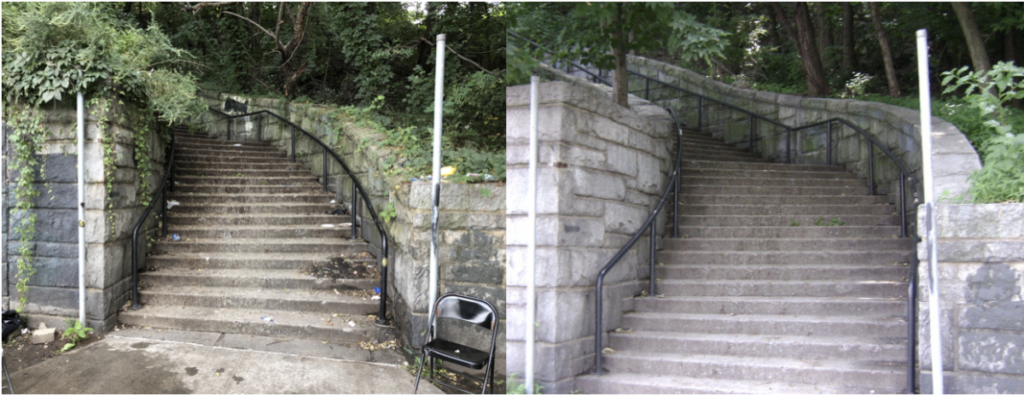
Left: the stairwell marking the southern entrance to University Woods from Cedar Avenue. Right: a photograph on the Parks Department website that first appeared in late 2012 (retrieved September 2018). Credit: Lucas Manfield/Parks Department
The city needs to increase parks funding by $6 billion over the next decade to remedy immediate problems caused by decades of underfunding, according to Center for an Urban Future, a Manhattan think tank.
The Parks Department said it does not track the total spending in each borough or per park across the city. But the Center for an Urban Future has analyzed city-wide maintenance funding — while only about one-fifth of the Parks Department budget this metric still provides some insight to where taxpayer dollars are going. The group found that although a quarter of the Bronx is zoned as parks land, it receives less public maintenance funding than Manhattan, Brooklyn and Queens.
Search BronxInk’s inspection data map, which has information about weekly maintenance spending at each park.
The Parks Department operating budget was more than $500 million in 2017, less than one percent of the city’s annual expense budget. That’s less than half of what it was 40 years ago. And when the city allocates less of its overall financial obligation to the Parks Department, it’s the smaller local parks, especially in the Bronx, that feel the effects.
“I think it’s very telling,” said John Surico, a research fellow at Center for an Urban Future. “I also think it’s telling about how we spend our money in America, and it’s a telling sign of the retreat of public dollars from public life.”
This lack of investment touches all aspects of Bronx parks. In Tremont Park, a proposed indoor recreation center was quashed due to “insufficient funding.” The vacant property, once home to the historic Bronx Grand Borough Hall, has sat empty for half a century. After the city failed for 50 years to develop the land for the public, it is now being optioned out to private developers.
Read: New life brought to Tremont Park
In addition to underfunding, public resources available in the Bronx aren’t distributed equitably. A BronxInk analysis found that resources were largely concentrated in the South Bronx, while the northern part of the borough sees fewer WiFi hotspots and other amenities.
Read: Mapping amenities in Bronx public parks
Public funding isn’t necessarily an indicator of a good park in the Bronx. And to make up the difference, in some places private donors and organizations have risen up to fill the gap.
More money, more problems
A decade ago, Soundview Park was little more than an unkempt field with rats and unusable facilities. Nearby residents stayed away because the park wasn’t only dirty, but dangerous too. It was known as a place for gang activity.
But that all changed when local resident Lucy Aponte created a private group called Friends of Soundview to improve conditions. This came on the heels of eight unsuccessful years of pleading with the city to improve the park and getting nowhere.
The group advocated for Soundview Park’s new butterfly garden, amphitheater and a free yearly music festival. The park’s sports fields have also been renovated, and there is a new paved running path.
Soundview is one of many parks in the Bronx that has benefitted from a trend toward private volunteerism in public spaces.
Read: Take out the old bring in the new: Soundview Park
Some of these organizations are conservancies advocating for specific parks: Friends of Van Cortlandt Park, Friends of Soundview Park and Friends of the Oval are just a few groups that operate under this model.
Another private group doesn’t revolve around a specific park. Rather, it aims to provide resources and services to residents throughout the borough. Bike New York, a not-for-profit organization with outposts throughout the city, operates out of three Bronx parks in the summer to provide free bike riding lessons to those in the borough.
Read: Learning to bike in the Bronx
When collectives like these step in to advocate for better resources, parks in the Bronx become cleaner and have newer, updated resources.
But when it comes to chasing private dollars for its public parks, the Bronx is playing a game of catch-up.
Powerhouse groups such as Central Park Conservancy have been injecting private resources into public parks for decades. But when a poorer neighborhood can’t afford to bankroll its public park, the land is maintained only by the city’s meager allocated resources.
Outside of wealthy Central Manhattan and Central Park, in the Bronx, the 2016 median household income was almost half of what it was in Manhattan, and the poverty rate was about 65 percent higher. This borough is poorer, on average, and their commitment to private park spending is less.
Though Van Cortlandt Park serves nearly three million annual visitors, it garnered less than $800,000 in private donations and public maintenance funding last year, according to financial disclosure forms and public documents. That’s compared to about $63.5 million in Central Park.
Read: Private donors saved New York City parks—but for whom?

A volunteer works to maintain one of Van Cortlandt Park’s many baseball fields. Photo credit: Brett Bachman
This influx of private money is ultimately a stopgap that allows some parks to flourish under the languishing Parks Department budget. While this trend can make for quick improvements in some parks, it also creates inequity when private citizens decide when and where to inject their money and time. On the farthest end of the spectrum, overt privatization presents its own set of problems: namely, unspoken rules that parks no longer belong to an entire community, but just to a portion of the population.
In the South Bronx neighborhood of Mott Haven, a local real estate developer and business improvement district in the community decided to build and maintain a new dog park called Mutt Haven. The grounds, benches, waste receptacles and facilities are brand new, nicer than the neighborhood’s public dog park, which is maintained by the city. While the private owners said the park is open to the public, some locals said they weren’t aware it even existed. Mutt Haven and similar projects target newer, wealthier residents living in high rises in the neighborhood, which has been hit with increased prices and new developments.
Read: Privatized puppy parks: a Bronx tail
In Highbridge, the quality of two privately funded community parks reflects the involvement — or lack of — the communities that use and care for them.
Read: A tale of two gardens
As a result of chronic underfunding and volunteerism, community members said Bronx parks are not a priority, and cities are slow to act. This disconnect only heightens problems in the borough’s parks — pollution, translation services and land stuck in limbo remain hurdles for the community to face.
Feast and Famine in Bronx Parks
A stretch of green sandwiched between Major Deegan Expressway and Putnam Avenue sits empty. The landowner had a contract to sell the space to the city and create a new park, but bureaucratic red tape means the space has been undeveloped and unused for years.
Read: Is the Bronx not entitled to its own High Line park?
North and South Brother Islands, which are visible from the Hunts Point waterfront, are filled with history; on one lies the remains of an old tuberculosis hospital, and the other is a bird sanctuary.
“South Brother Island is just this improbable place, this beautiful little island that has so much potential for teaching,” said Erik Baard, a journalist and founder of HarborLAB.
But efforts to make the islands publically available have stalled, and only a few select groups are granted access to the land.
Read: Access to North and South Brother Islands still in question
And in Mott Haven, the newly completed Roberto Clemente Plaza, a public park, is fenced off. Nearby private businesses want to staff the park with a private security firm to keep the area safe. In the meantime, a fence keeps the public out of its public park.
Bronxites say there is a disconnect between community needs and city response when it comes to the borough’s parks. Bureaucratic red tape affects not only fights to designate empty, unused land as a public park to serve residents, but also to deal with persistent issues within existing parks.
When an elementary school class discovered a slave burial ground at a public park in Hunts Point, the Parks Department gave it official recognition in 2014. But plans for a memorial have since stalled at the local level.
Read: Ongoing struggle to get recognition for slave burial ground at Joseph Rodman Drake Park

These large gravestones belong to the historic Hunts Point families who are buried inside the enclosed cemetery in the park. Photo credit: Seyma Bayram
The lack of communication doesn’t just apply to the Parks Department and communities advocating for their parks; often, miscommunication between city and state agencies can allow serious environmental problems to go unchecked.
Soundview Park is touted as a waterfront space with access to the Bronx River. The park offers kayak, canoe and water sports rentals. It is also one of many parks in the city caught up in the fight to offer recreation activities despite contamination concerns that plague the city and waterways. Multiple agencies at the city and state levels haven’t worked together to address environmental concerns, at the expense of park patrons wanting to enjoy the waterfront.
Read: Bronx River Alliance: Water pollution has been the highest in years
In Williamsbridge Oval, multiple immigrant groups jostle for space on a single soccer field, eager to get in a few hours of recreation before the sun goes down. There are no lights on the field to illuminate play into the evening.
The Parks Department does not translate its meetings, so non-English-speaking residents have no way to voice their concerns and advocate for better resources in the park.
Read: Immigrants face barriers to Bronx parks
There is a divide among parks in the city’s greenest borough: some are important community spaces, others, forgotten wastelands.
“It’s a very important part of city life,” Steve Cohen, the former executive director of Columbia University’s Earth Institute, said of parks. “And sometimes it has a hard time competing with other essential services.”
Brett Bachman contributed to this report.
__________________________________________________________________________________
Executive Editors: Samantha Stokes and Brett Bachman
Managing Editors: Tristan Cimini and Savannah Jacobson
Web Design: Lucas Manfield
Data Editor: Leafy Yan
Reporting by: Olivia Eubanks, Beatriz Muylaert, Joasia Popowicz, Allen Devlin, Max Horberry, Seyma Bayram, Tiya Thomas, Virginia Norder, Aliya Chaudhry

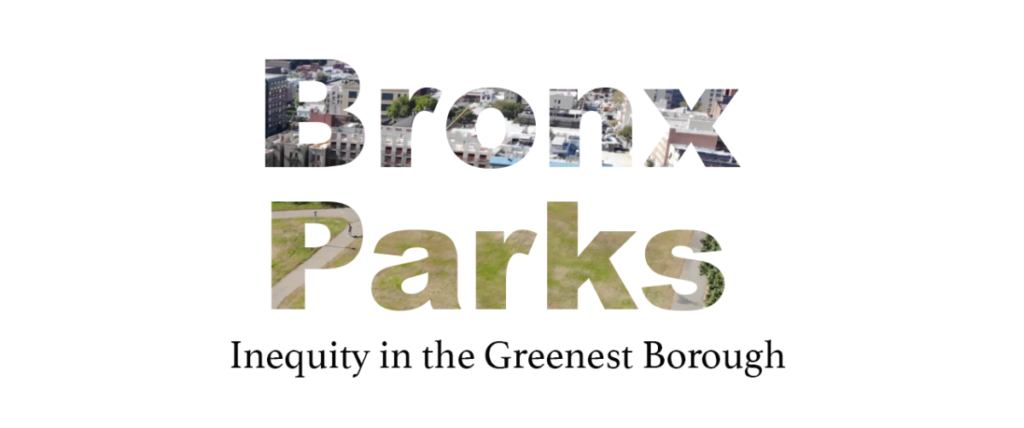

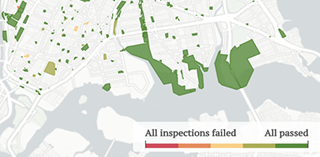 Tracking inspection records in Bronx public parks | Lucas Manfield
Tracking inspection records in Bronx public parks | Lucas Manfield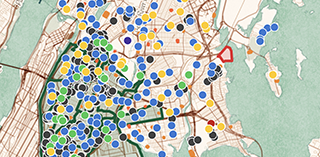 Mapping amenities in Bronx public parks | Leafy Yan
Mapping amenities in Bronx public parks | Leafy Yan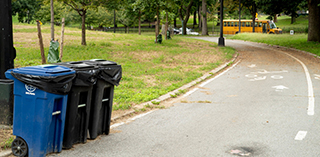 Acceptable or unacceptable: trash and inequality in two Bronx parks | Max Horberry
Acceptable or unacceptable: trash and inequality in two Bronx parks | Max Horberry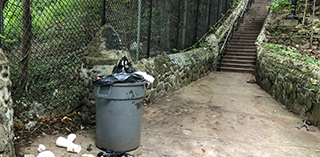 The little west Bronx park that could, defying decade of cleanup efforts | Lucas Manfield
The little west Bronx park that could, defying decade of cleanup efforts | Lucas Manfield New life being brought to Tremont Park | Allen Devlin
New life being brought to Tremont Park | Allen Devlin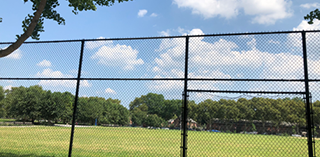 Take out the old bring in the new: Soundview Park | Olivia Eubanks
Take out the old bring in the new: Soundview Park | Olivia Eubanks Learning to bike in the Bronx | Virginia Norder
Learning to bike in the Bronx | Virginia Norder Private donors saved New York City parks—but for whom? | Brett Bachman
Private donors saved New York City parks—but for whom? | Brett Bachman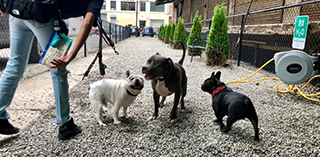 Privatized puppy parks: a Bronx tail | Tristan Cimini
Privatized puppy parks: a Bronx tail | Tristan Cimini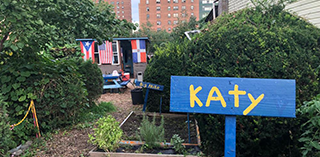 A Tale of Two Gardens | Tiya Thomas
A Tale of Two Gardens | Tiya Thomas Access to North and South Brother Islands still in question | Savannah Jacobson
Access to North and South Brother Islands still in question | Savannah Jacobson Is the Bronx not entitled to its own High Line park? | Beatriz Muylaert
Is the Bronx not entitled to its own High Line park? | Beatriz Muylaert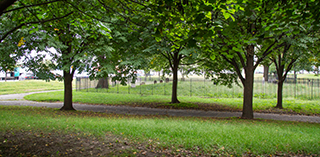 Ongoing struggle to get recognition for slave burial ground at Joseph Rodman Drake Park | Aliya Chaudhry
Ongoing struggle to get recognition for slave burial ground at Joseph Rodman Drake Park | Aliya Chaudhry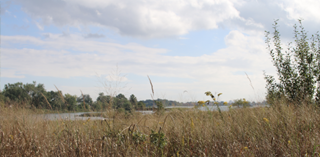 Bronx River Alliance: Water pollution has been the highest in years | Joasia E. Popowicz
Bronx River Alliance: Water pollution has been the highest in years | Joasia E. Popowicz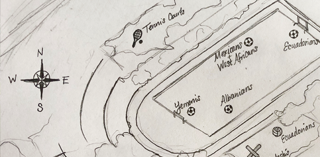 Immigrants face barriers to Bronx parks | Seyma Bayram
Immigrants face barriers to Bronx parks | Seyma Bayram